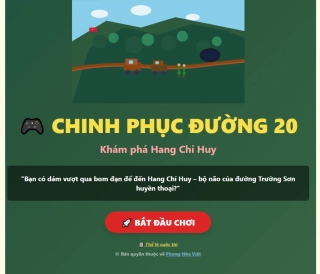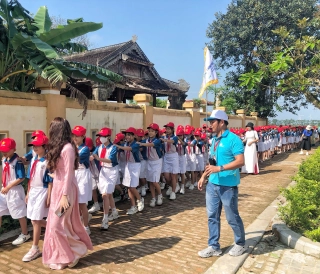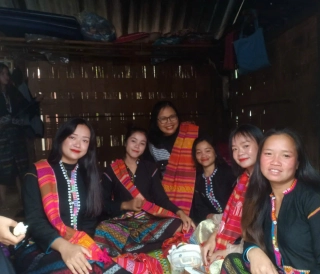The Bru – Vân Kiều Philosophy of Worshiping the Living Soul
06-10-2025 16:29
Main contents
- 1. Ethnic Origins and Living Environment
- 2. The Core of Belief: Animism and the Guardian Spirit
- 3. The Life Cycle and the Worship of the Living Soul
- 4. The Sacred Space
- 5. Gender and Marriage: The Yang Cu Da Ritual
- 6. The Philosophy of Life and Death and the Aesthetics of the Living Soul Worship
- 7. References
In the diverse system of Vietnamese folk beliefs, the Bru – Vân Kiều stand out as a unique case: they worship the soul of the living. From the moment a child is born, the family prepares a soul bowl (bát bản mệnh), which is placed on a small altar near the roof of their stilt house. This ritual continues throughout the person’s life and only ends when they pass away.
Unlike the Kinh majority, who venerate their ancestors, the Bru – Vân Kiều consider the “living soul” (hồn sống) as sacred as the spirits of the dead. This practice is not only a life-cycle ritual but also a profound moral philosophy — a reminder that one must “live in harmony with their soul,” respecting both self and community.
This article explores the origin and structure of the living soul worship belief, the relationship between ritual, ethics, and community, and the humanistic philosophy reflected in this cultural practice.
Ethnic Origins and Living Environment
The Bru – Vân Kiều belong to the Mon–Khmer language family and have long inhabited the Trường Sơn Range (Annamite Mountains), particularly in western Quảng Trị, Quảng Bình, and Thừa Thiên – Huế provinces. According to ethnological sources, they originated from central Laos and gradually migrated eastward, establishing villages around Mount Viên Kiều — from which the name “Vân Kiều” was derived.
Today, the Bru – Vân Kiều population numbers about 75,000 people (according to the 2019 National Census), living across Vietnam’s central region. They are well known for their industriousness, solidarity, and deep respect for nature, viewing mountains, rivers, and forests as sacred beings.
In addition to ancestor worship, the Bru – Vân Kiều maintain a rich pantheon of deities: Yang Kute (Earth God), Yang Krông (River God), Yang Coor (Mountain God), and Yang Cămnơt (Guardian Spirit). This deep-rooted animistic worldview forms the spiritual foundation for their practice of worshiping the living soul — one of the most distinctive expressions of Bru – Vân Kiều spirituality.
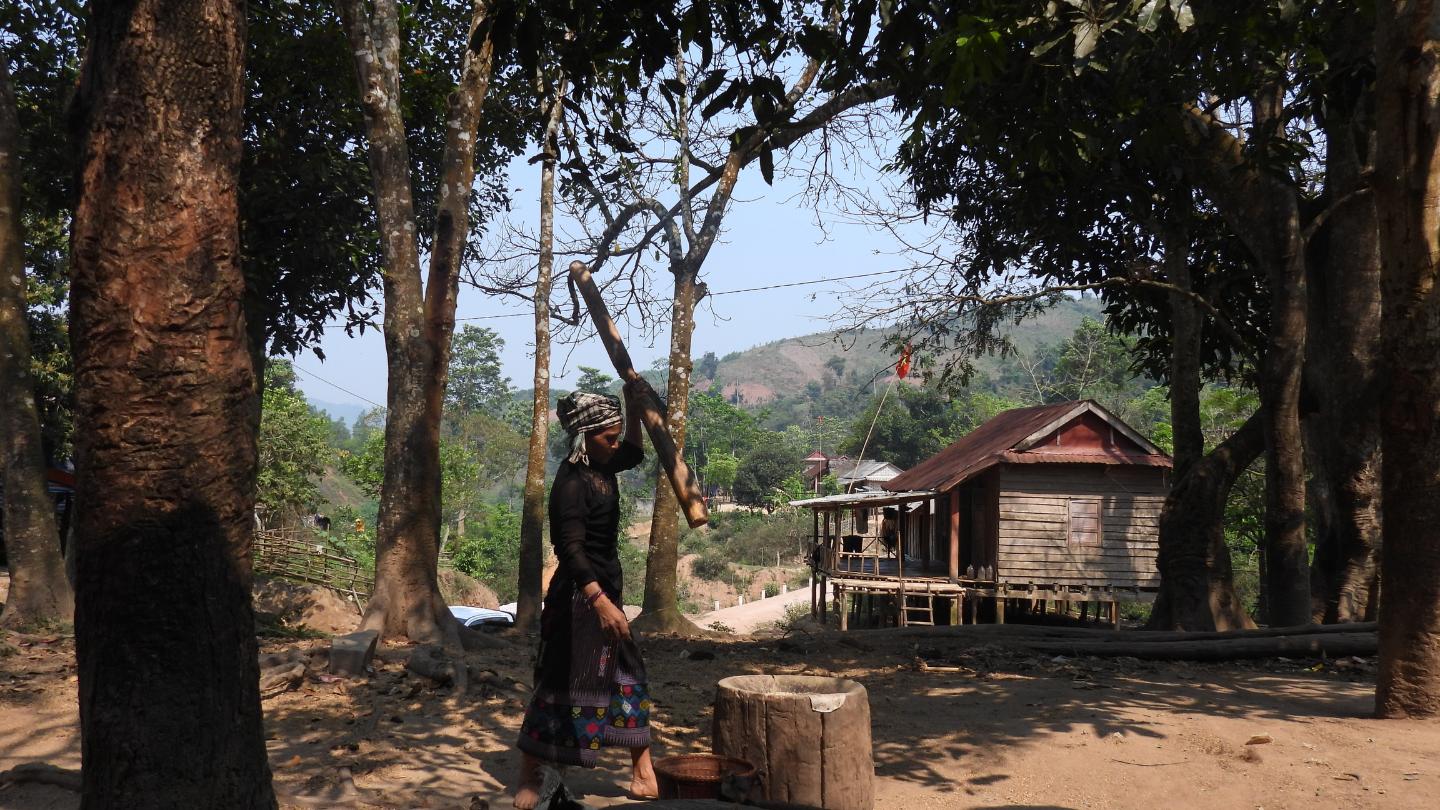
Living Space of the Bru – Vân Kiều People. Photo by Tuệ Minh
The Core of Belief: Animism and the Guardian Spirit
The Bru – Vân Kiều’s spiritual worldview is rooted in the belief that all things possess souls. Human beings are not merely physical bodies; they also contain a “living soul” (chiết) — a spiritual entity that governs life and vitality. When this soul departs from the body, illness, misfortune, or even death may occur.
Each individual, therefore, is believed to have a personal guardian deity known as Yang Cămnơt — the protective spirit who observes, shields, and judges their actions. From this belief arises a moral triad expressed through the principle of “Ask – Promise – Thank”:
-
Ask (Xin): before undertaking important actions such as building a house, marriage, or long journeys into the forest;
-
Promise (Hứa): when praying for health or peace;
-
Thank (Tạ): when one’s wishes are fulfilled.
This system forms not only a philosophy of life but also a moral framework that encourages personal responsibility, sincerity toward the spirits, and harmony within the community. As elder Hồ Trung Truồi from Ngân Thủy, Quảng Bình, once said: “If you break your word to Yang, even your own soul will feel ashamed.”
Thus, the worship of the living soul is more than a ritual — it is an ethical code for existence. Each person, in essence, “worships their own soul,” holding themselves accountable to live truthfully and righteously.
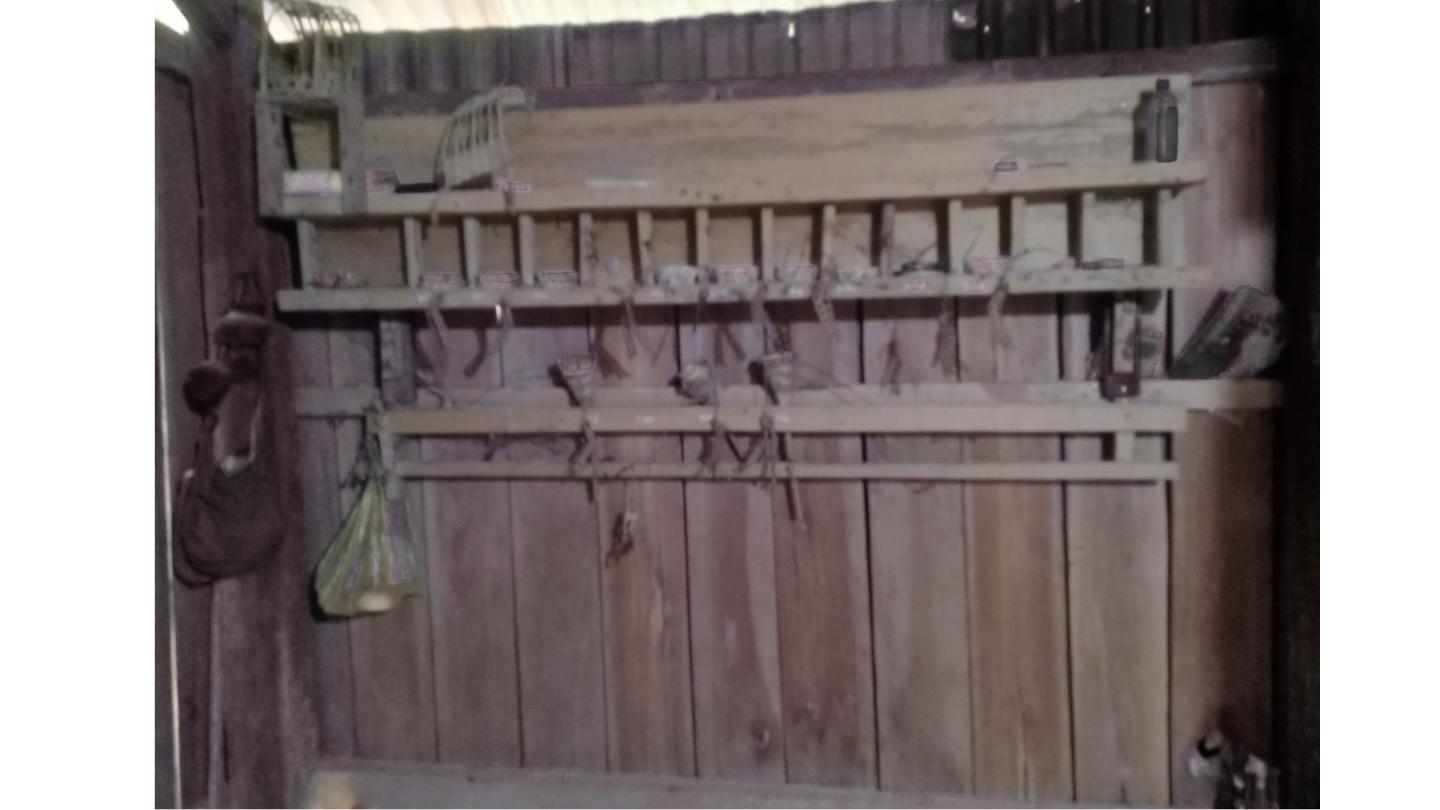
Living Soul Altar of the Bru – Vân Kiều People. Photo by Thanh Thủy
The Life Cycle and the Worship of the Living Soul
The worship of the living soul accompanies a Bru – Vân Kiều person throughout their entire life — from birth to death.
The Infant Soul-Calling Ceremony:
About one month after birth, a child undergoes the Rặp Chiết ritual, marking the reception of their soul. The family offers chicken, pork, sticky rice, betel leaves, areca nuts, and rice wine, while the shaman prays to the guardian spirit and ancestors for protection. A soul bowl is then prepared and placed inside a woven bamboo ring hung near the roof — regarded as “the house of the soul.”
The Soul Celebration Rituals:
When the child reaches 8–10 years of age, the family performs the Xana Chiết or “Great Soul Celebration,” moving the soul bowl to a higher level called Năm Nớt (a decorated bamboo box). Upon reaching adulthood, the Rặp Chămpa-rơ ritual is held, sometimes involving the sacrifice of a buffalo. The soul is then elevated to Tam Ba or Hình — an intricately carved wooden miniature house. Each stage symbolizes the individual’s growing spiritual strength and social status.
The Soul-Calling Ceremony During Illness:
When someone falls seriously ill, a shaman uses a ritual knife and the Pi flute to summon the wandering soul:
“O soul, come back! Do not stay by the stream; do not sleep beneath the trees.”
If the person recovers, the family holds a thanksgiving ceremony. If not, it is believed that the deities have reclaimed the soul — a profound reflection of the Bru – Vân Kiều view on life and death.
The Soul Transfer in Marriage:
When a woman marries, she brings her soul bowl to her husband’s home. The groom’s family performs a welcoming ritual called Yang Cu Da. This act symbolizes spiritual equality between genders — the wife does not lose her roots but carries her inner world with her into the new family.
At Death:
When a person passes away, the altar of the soul is dismantled. The soul bowl is either buried with the deceased or, if the person once sacrificed a buffalo, it may be kept and worshiped as an ancestral spirit.
This life cycle expresses the Bru – Vân Kiều’s belief in continuity and transformation — the living soul becomes an ancestral soul, completing the eternal circle of existence.
The Sacred Space
Within a traditional Bru – Vân Kiều stilt house, the altar for the living soul is placed at the highest point — just beneath the roof. Each family member has their own soul bowl, arranged in order of age from right to left. On the altar are various levels of Chiết (soul containers) that represent spiritual rank and ritual offerings:
-
Aruông — a simple bamboo hanger for a child’s soul;
-
Năm Nớt — a bamboo box adorned with tassels;
-
Tam Ba or Hình — an intricately carved wooden house used during buffalo sacrifices, symbolizing the highest spiritual level.
These sacred objects serve not only as artistic expressions but also as vessels for the soul itself. The Bru – Vân Kiều strictly prohibit touching the altar: women are forbidden from handling the soul bowls, and outsiders who violate the rule must offer a pig or chicken as atonement.
Such reverence reflects the community’s sacred discipline — a moral and spiritual code that sustains respect for one’s own soul and for the souls of others.
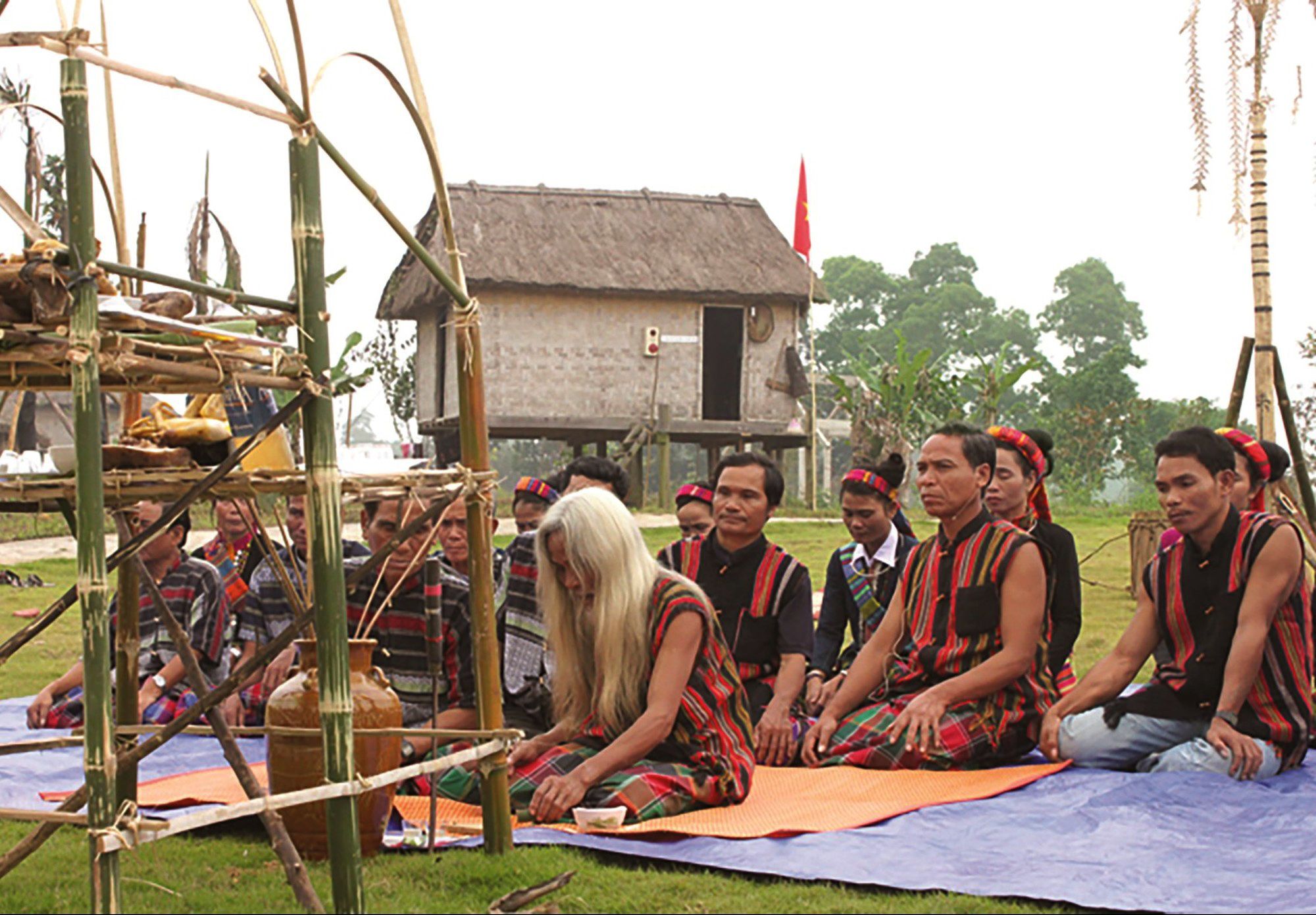 Ritual Ceremony of the Bru – Vân Kiều People. Archive Photo
Ritual Ceremony of the Bru – Vân Kiều People. Archive Photo
Gender and Marriage: The Yang Cu Da Ritual
One of the most distinctive features of Bru – Vân Kiều spirituality is the sacred position of women within their belief system. The Yang Cu Da custom — the worship of the wife’s living soul within her husband’s household — consists of three main ceremonies:
-
A Mứt: the ritual of welcoming the bride’s soul into the husband’s family altar, involving offerings of four chickens, a bronze bracelet, and rice wine;
-
Bar: performed after the birth of a child, with offerings of seven chickens and one pig to pray for harmony and fertility;
-
Xuất: the concluding ceremony, symbolizing the complete spiritual union between the two families.
This ritual functions as a sacred alliance between clans, reflecting a profound humanistic philosophy: marriage is not merely a physical union but also the merging of souls and ancestral spirits from both lineages.
From a sociological perspective, Yang Cu Da preserves gender balance within a patriarchal cultural structure — a rare and remarkable feature among many other ethnic minorities.
The Philosophy of Life and Death and the Aesthetics of the Living Soul Worship
The Bru – Vân Kiều perceive life and death as two continuous states: the living soul transforms into the ancestral soul. Their sacred space, therefore, is not a separate temple or shrine but located within the house itself — the place where people live, eat, and gather — a “miniature cosmos.” This worldview embodies a profound philosophy: life and death are not opposites but harmoniously intertwined within the cosmic flow.
This understanding allows the Bru – Vân Kiều to face death with calm acceptance, viewing it as “a return to Yang and the ancestors.” The presence of the living soul altar symbolizes eternal life — honoring human existence while still alive, so that after death, one’s spirit naturally merges with the sacred collective of the community.
In comparison, the Kinh people center their worship on deceased ancestors, while the Bru – Vân Kiều direct their veneration toward the living — a rare phenomenon in Southeast Asian cultures. The Tày and Thái perform soul-calling rituals only during illness, whereas the Bru – Vân Kiều maintain a permanent personal soul altar for every individual. Similarly, while the Hmong believe the soul can wander, the Bru – Vân Kiều developed a complete system of soul worship with hierarchical rituals and symbolic artifacts. This illustrates a belief system that transcends simple soul invocation — evolving into a living philosophy of dignity, harmony, and community.
The worship of the living soul is both a religious ritual and a space of aesthetic and moral education. Ritual objects such as the bamboo rings, Tam Ba/Hình wooden houses, and the Pi flute carry not only spiritual symbolism but also express a refined folk aesthetic — simplicity, balance, and harmony with nature.
Each soul-offering ceremony is also a communal lesson: children observe and learn how to pray, behave, and show respect; adults reinforce moral teachings about gratitude, honesty, and filial piety. As elder Hồ Pả Kăm once said, “We worship the soul so our children learn how to live rightly — when they grow old, their own souls will be honored the same way.” Thus, this belief serves as a “home school” of morality, nurturing character through spirituality and helping the Bru – Vân Kiều preserve their cultural identity amid modern transformations.
The Bru – Vân Kiều’s philosophy of worshiping the living soul is more than a custom — it is a complete cultural and ethical system. It reflects the belief that every life is sacred and worthy of reverence and care from the very moment of birth. Through their life-cycle rituals, the living soul altar becomes a center of moral cultivation and communal unity, while the aesthetic sensibility of their folk traditions makes the sacred tangible, intimate, and deeply human.
In the rich mosaic of Vietnamese culture, the Bru – Vân Kiều’s “living soul worship” stands as a remarkable spiritual heritage — expressing a profound human philosophy born from the Trường Sơn Mountains.
References
[1] Báo Dân tộc & Miền núi, “Tục thờ ‘linh hồn người sống’ của người Vân Kiều,” 2018.
[2] Tạp chí Cửa Việt, “Tục thờ bản mệnh của người Bru – Vân Kiều,” 2019.
[3] Dân trí, “Lạ lùng chuyện cả làng lập bàn thờ sống chính mình,” 2021.
[4] Tổng cục Thống kê, “Kết quả điều tra dân số 2019 – thành phần dân tộc,” 2020.
[5] Viện Dân tộc học Việt Nam, Ethnographic Notes on the Bru – Vân Kiều People, Nxb KHXH, Hà Nội, 2015.
[6] Tạp chí Cửa Việt, “Yang Cu Da – tục thờ linh hồn người sống nhà vợ trong gia đình chồng,” 2024.
[7] Đỗ Văn Phúc, “Vạn vật hữu linh và tín ngưỡng bản mệnh ở miền Trung,” Tạp chí Dân tộc học, 2020.
[8] VOVWorld, “The Bru Van Kieu’s rituals of worshipping the souls of the living,” 2020.
[9] VietnamPlus, “Bru Van Kieu ethnics worship the souls of the living,” 2022.
[10] VTV8, “Tục thờ hồn sống của đồng bào Bru – Vân Kiều,” 2022.
[11] Báo ảnh Dân tộc & Miền núi, “Không gian nhà sàn và bàn thờ hồn của người Vân Kiều,” 2019.
[12] Hồ Phương, “Cấu trúc vật thờ Aruông, Năm Nớt, Tam ba/Hình,” Tạp chí Văn hóa Dân gian, 2021.
[13] Trần Thị Nhàn, “Vai trò của thầy mo trong tín ngưỡng Bru – Vân Kiều,” Tạp chí Nghiên cứu Tôn giáo, 2020.
[14] Nguyễn Thị Kim Ngân, “Biểu tượng giới trong nghi lễ dân tộc thiểu số miền Trung,” Tạp chí Văn hóa và Con người, 2023.
[15] UNESCO, Spiritual Heritage of the Annamite Range, Bangkok, 2018.
[16] Lê Trung Vũ, “Tín ngưỡng gọi vía trong văn hóa Tày – Thái,” Tạp chí Dân tộc học, 2019.
[17] Hồ Văn Minh, “Quan niệm vía và linh hồn trong văn hóa Mông,” Tạp chí Văn hóa các Dân tộc, 2020.
Author: Tuệ Minh
Mini Game: Conquer Road 20 – Explore Hang Chi Huy
Travel Mini Game: Conquer Route 20 – Explore Commander Cave – Join Now to Win Free Tours and Exciting Prizes
UNESCO’s Educational Philosophy – Lessons from the World’s Most Progressive Nations
This philosophy was articulated in the influential report “Learning: The Treasure Within” (UNESCO, 1996), which introduced the Four Pillars of Education:
Learning to Know, Learning to Do, Learning to Live Together, and Learning to Be.
These pillars not only reflect the journey of personal growth, but also emphasize the vital role of education in building a just and sustainable society.
The Ma-Coong Drum Beating Festival
The Ma-Coong Drum Beating Festival is one of the most unique cultural events of the Bru - Van Kieu ethnic group, held annually in the Truong Son mountains, Quang Binh. This festival is not only a traditional ritual deeply rooted in spiritual beliefs but also an occasion for the community to come together, enjoy festivities, and find life partners. With the resounding drumbeats echoing through the vast jungle, the festival is a symbol of reverence for the gods and a cultural emblem of the Ma-Coong people.



